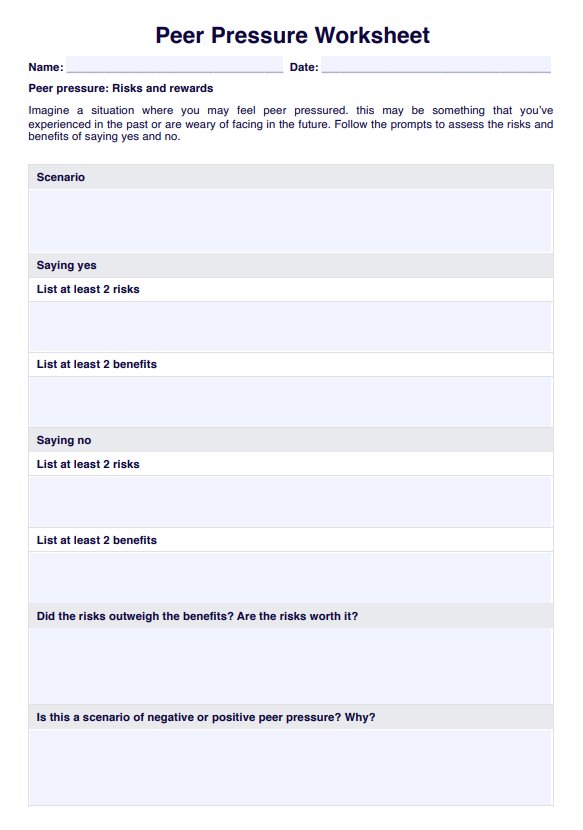A peer pressure worksheet is a structured document or activity designed to help individuals explore and understand the dynamics of peer pressure, often in educational or counseling settings.

Peer Pressure Worksheet
Empower individuals with our peer pressure worksheet guide – navigate social influence, foster resilience, and make informed decisions confidently.
Peer Pressure Worksheet Template
Commonly asked questions
Peer pressure worksheets can be incorporated into school curriculum activities or counseling sessions. They provide a framework for students to explore their experiences with peer influence, develop critical thinking skills, and enhance their ability to make informed decisions. These worksheets may also serve as a starting point and resource for classroom discussions on social dynamics.
Peer pressure worksheets cover various topics related to social influence, decision-making, and interpersonal skills.
EHR and practice management software
Get started for free
*No credit card required
Free
$0/usd
Unlimited clients
Telehealth
1GB of storage
Client portal text
Automated billing and online payments











